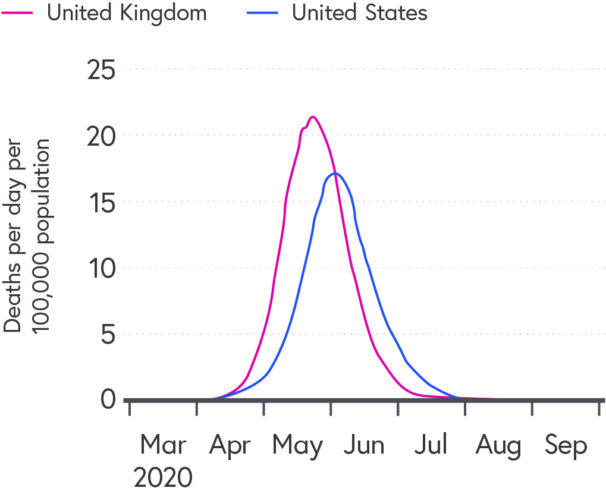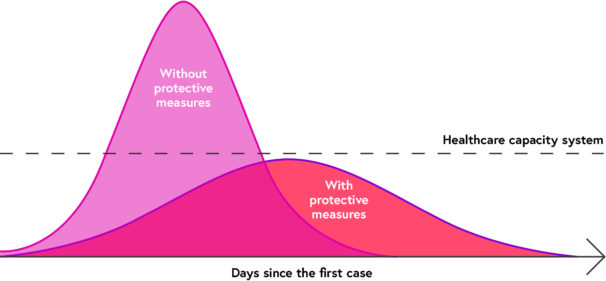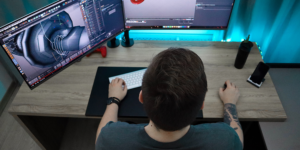Can we model the coronavirus pandemic?
Explore what mathematical modelling can – and can't – tell us about how the COVID-19 pandemic will develop.

With governments scrambling to respond to COVID-19’s continued sweep across the globe, policymakers and public alike are having to confront challenges society hasn’t faced for a century or more.
大流行最引人注目的问题之一是如何应对不确定性。随着该病毒仅在2019年12月出现(因此是“新颖”冠状病毒的绰号),关于该病毒到底是什么,以及未来几周对世界的影响,存在许多未解决的问题。
With the accuracy of antibody testsbeing called into question对于许多专家而言,人们对病毒已经传播到不同国家的种群的距离鲜为人知 - 人们越来越多地转向大流行建模,以提供一定程度的未来确定性,而目前不存在。
How will coronavirus end?
Mathematical models are created by scientists in order to provide predictions. In the case of epidemics and pandemics, modelling can be vitally important because it allows policymakers to see what shape the spread of a virus might take in the months to come.
According to The Conversation, “insights from mathematical modelling are vital to ensuring that authorities can prevent as many deaths as possible.” For pandemics, these are called SIR models – as they attempt to plot the numbers of people Susceptible to the virus, those who become Infected, and those who Recover (or die).
There has been a swathe of models that have filled timelines and news cycles, from those of established institutions like theInstitue for Health Metric Evaluation(IHME) in America, to independent websites likeCOVID-19 Projections, which uses artificial intelligence to model the pandemic’s progress, country to country.
Do coronavirus models get it wrong?
In the case of the spread of coronavirus in the UK, pandemic modelling has already played an important role. The UK’s government’s admitted early strategy was one of ‘herd immunity’ – letting the virus move through the country to the point where its reproductive number (R0) fell below one, and the virus would start infecting fewer and fewer people.
但是,当帝国大学团队一直建议政府制定了一种新模式时,该政策突然扭转了 - 基于意大利受影响最严重的地区的数据 - 指出,如果不受组织的检查,该病毒会很快淹没国家国家卫生服务,并导致500,000人死亡。The same model also provoked the US government into supporting a similar shutdown of the economy across the Atlantic.
Imperial’s initial model,argues The Guardian, was “based on 13-year-old code for a long-feared influenza pandemic, [and] assumed that the demand for intensive care units would be the same for both infections.”
Nature reports that, “the [Imperial] researchers initially estimated that 15% of hospital cases would need to be treated in an intensive-care unit (ICU), but then updated that to 30%, a figure used in the first public release of their work on 16 March. That model showed the UK health service, with just over 4,000 ICU beds, would be overwhelmed.”
Imperial使用伦巴第和武汉收集的数据更新了模型,以更改他们的意见,这意味着该模型预测该病毒如果不受检查的话会淹没卫生系统。

Rival schools
One of the ‘risks’ of modelling something as unpredictable and unknowable as a new virus is that changing the parameters even slightly at the start of the process can result in wildly different results – such models are extremely sensitive to their initial conditions.
Another modelling team at the University of Oxfordshowed that, in the absence of any data on how many people in the UK are actually infected, the same number of confirmed cases and deaths could equally point to a low Infection Fatality Rate (IFR), and a lower hospitalisation rate as the pandemic unfolds.
This argument has been used by those赞成结束锁定that have proved to be so punishing to economies worldwide, even though the ‘Oxford model’ only demonstrates that a wide range of possibilities exist when we have so little raw data on how many people have actually been infected with coronavirus, and how contagious it really is.
Why modelling matters
Pandemic modelling is important because it presents governments – and ordinary people – with a range of possibilities about what the future holds.
Although the worst-case scenario of the ‘Imperial model’ has, fortunately, yet come to pass, it did prompt policymakers into action. Equally, the ‘Oxford model’ has emphasised the need for testing in order to know how far the virus has spread – and thus how governments should react moving forwards.
As the British Medical Journal argues, “modelling is a necessary input to public policy decisions but should be taken as just one input among many, one piece of a large puzzle”. Used alongside other strategies like social distancing and contact tracing, modelling allows us to regain some measure of control over a fundamentally chaotic situation.
We should also bear in mind that models change as new information becomes available.Al Jazeera has explained to their readersthat, “no single dataset exactly represents the reality on the ground. Every day, thousands of healthcare workers, government agencies and researchers are each collecting, processing and sharing what they know about the virus. The goal is to gather the most reliable data that can help people understand the outbreak as it evolves.”

Ultimately, science is built on disagreement. When policymakers tell us that they’re ‘following the science’, that claim might overlook the fact that scientists don’t always agree on the best way forward – and that this lack of consensus is healthy.
Mathematical modeller Jasmina Panovska-Griffithsurges us to rememberthat, “instead of focusing on which model is correct, we should accept that one model cannot answer it all.” As one aphorism in the field states:“所有模型都是错误的,但有些是有用的”.
—
For more information on how modelling the coronavirus pandemic can help the public and policymakers make important decisions, join The Open University’s new course:COVID-19: Pandemics, Modelling, and Policy.








